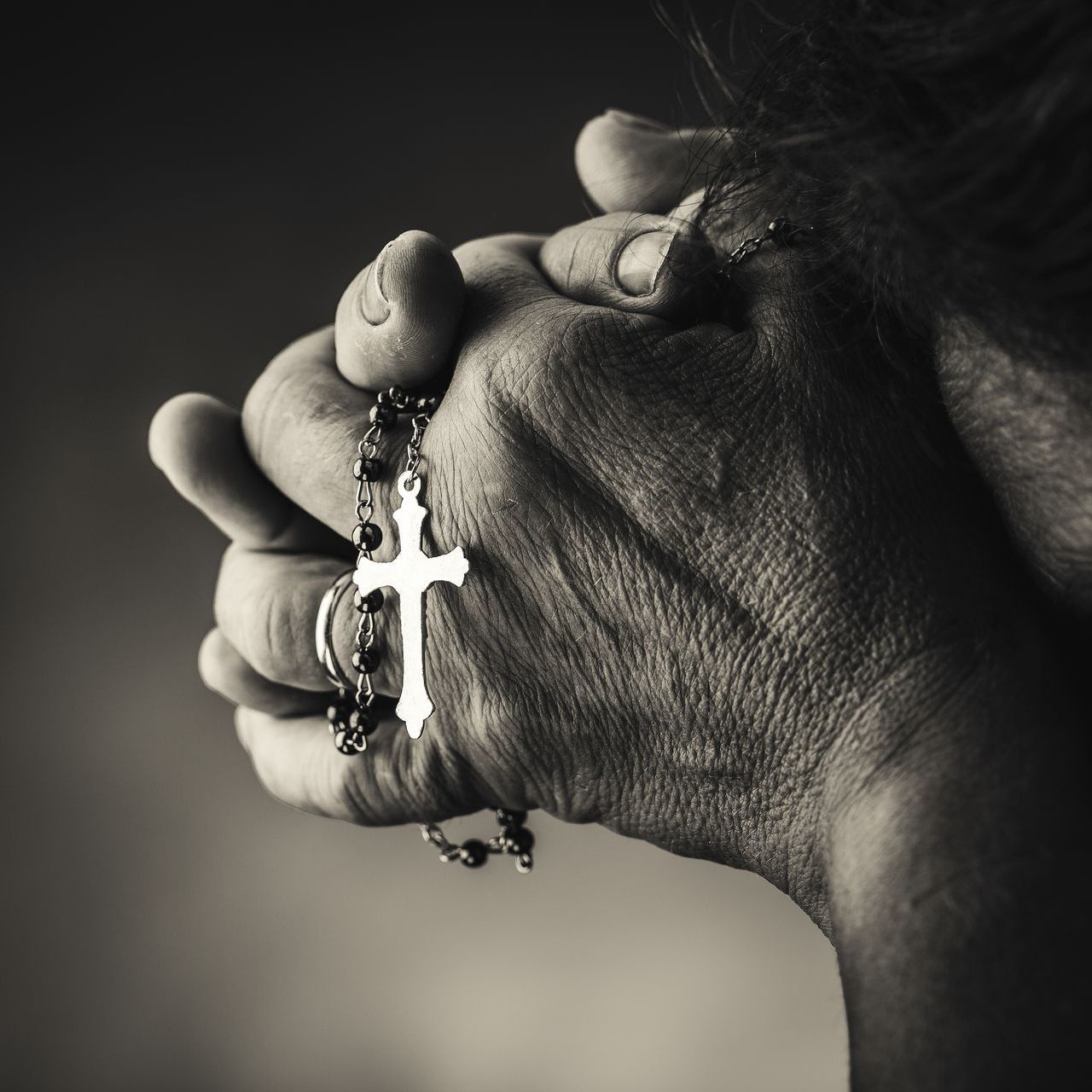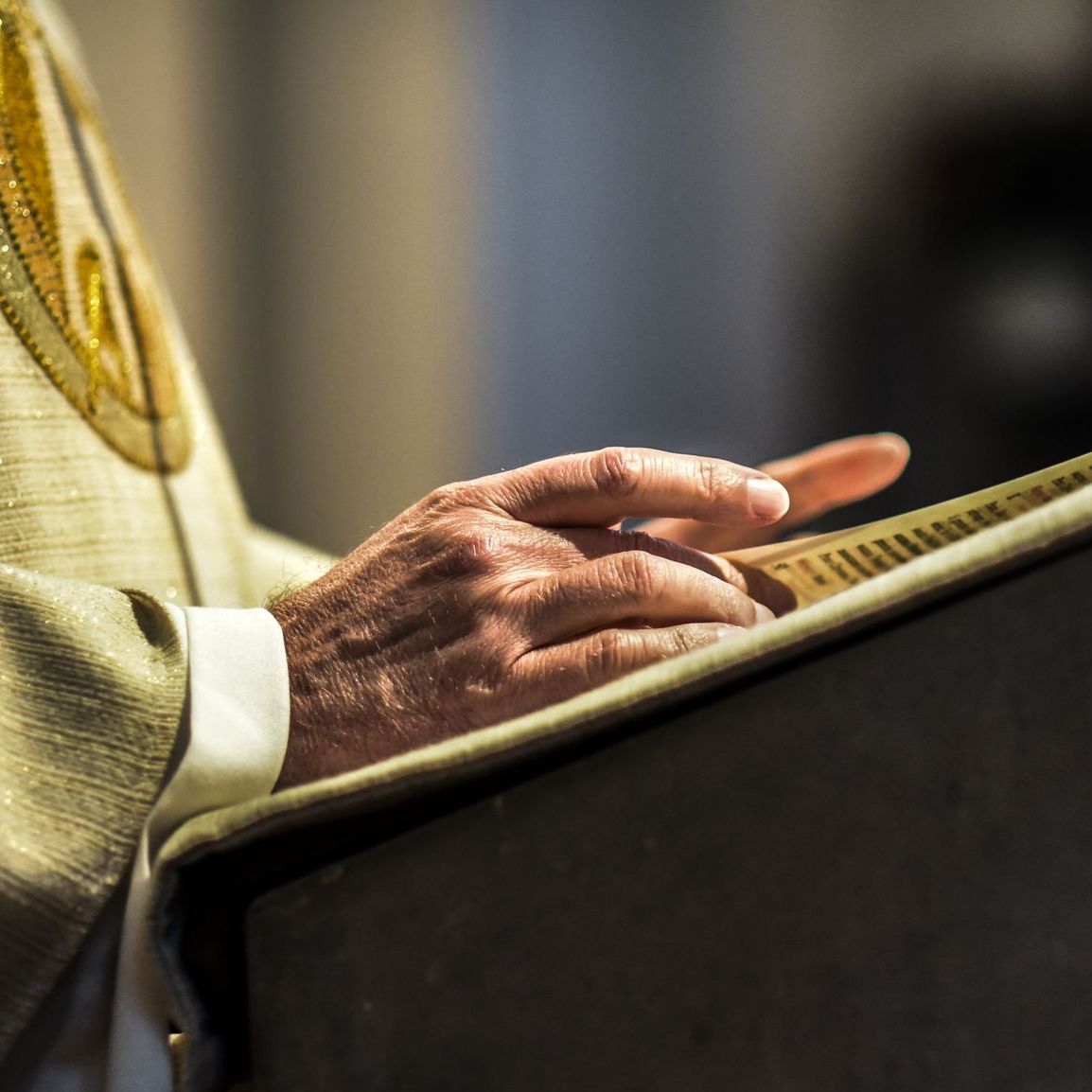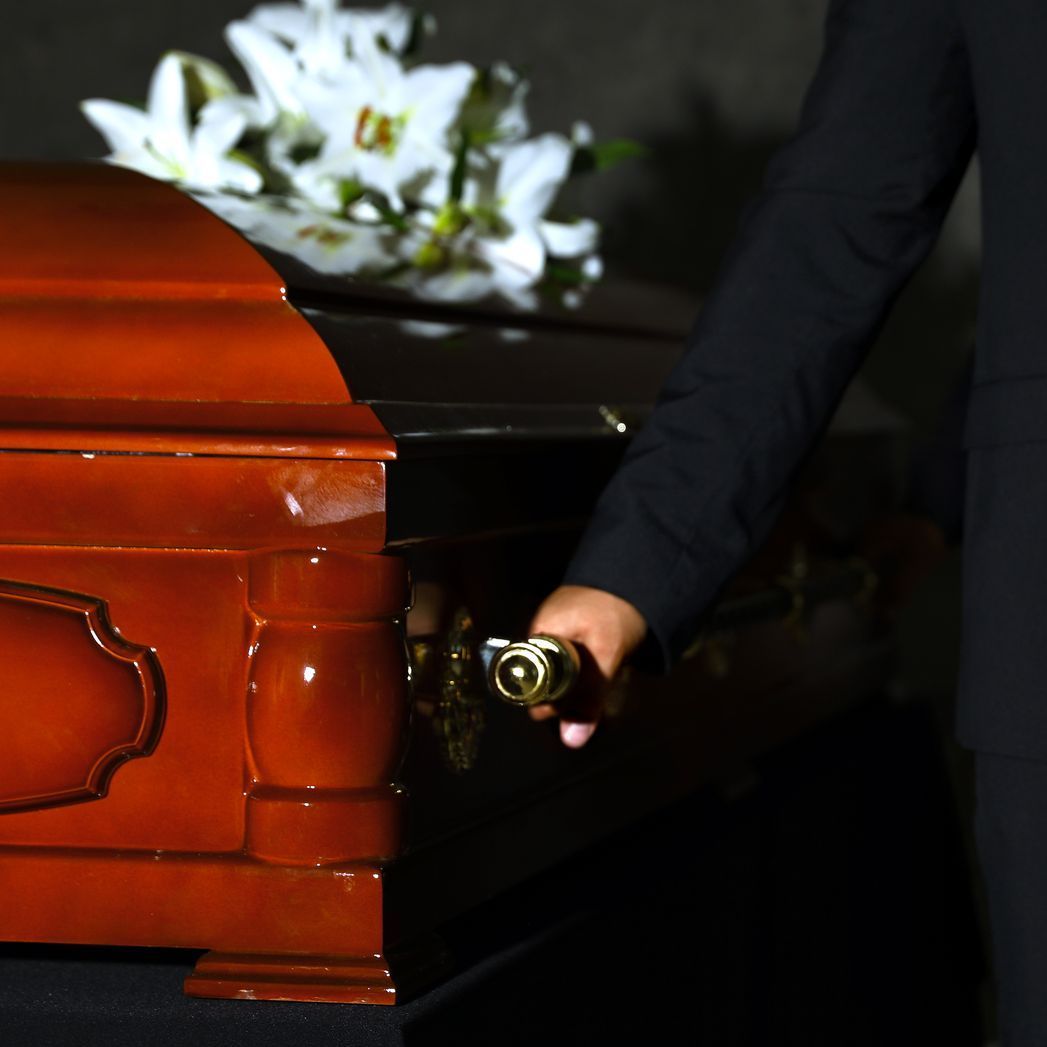The Catholic Funeral Rite
The Catholic funeral rite is a time-honored tradition that allows our Christian community to gather in support of the bereaved and to commend our dear departed loved ones into God’s loving and merciful hands. A Catholic funeral rite is divided into several stations, or parts, each with its own purpose: vigil, funeral liturgy, and rite of committal. By following the complete structure, the bereaved family is strengthened in faith, hope, and love.
“Eternal rest, grant unto them, O Lord, and let perpetual light shine upon them. May the souls of the faithful departed through the mercy of God rest in peace. Amen.”

Love: Vigil Service (Wake or Rosary)
The vigil is a prayer service usually held the evening before the funeral and may include a rosary. The Order of Christian Funerals (no. 56) states, “At the vigil, the Christian community keeps watch with the family in prayer to the God of mercy and finds strength in Christ’s presence.” This is a special time for the bereaved family to receive love and support from their Christian brothers and sisters and to share stories as they honor and remember a unique life.
At the vigil, much like a viewing or a wake, family and friends gather in the home of the deceased, in the funeral home, or in the Church to pray and remember the deceased and commend them to God. In prayer, we ask God to console us in our grief and give us strength to support one another. The vigil is the most appropriate time for family and friends to share stories, eulogies, and memories.

Faith: Funeral Liturgy
The funeral liturgy is the central expression of faith for the Catholic community after the loss of a loved one. The funeral liturgy may be celebrated at a Requiem Mass, or when Mass cannot be celebrated, a funeral liturgy outside Mass can be celebrated at the Church or in the funeral home. The funeral liturgy is an act of worship in which the family and friends of the deceased gather with the Church to give praise and thanks to God. Through prayer and petition, our focus is placed on Christ’s victory over sin and death as we commend our loved one to God’s tender mercy and compassion.

Hope: Rite of Committal (Burial or Interment)
The Rite of Committal, the final act of the community of faith in caring for a lost loved one, is the conclusion of the funeral rite. The Church prefers for burial to take place on consecrated ground. In committing the body to its resting place, the community expresses the hope that, with all those who have gone before us marked with the sign of faith, the deceased awaits the glory of the resurrection. The Rite of Committal is an expression of the communion that exists between the Church on earth and the Church in heaven: the deceased passes with the farewell prayers of the community of believers into the welcoming company of those who need faith no longer, but see God face to face.
Our Local Diocese: More Information about the Diocese of Duluth
Download the PDF below to view Catholic Readings:
Download the PDF below to view Catholic Music:
Frequently Asked Questions
-
What is the Church’s stance on cremation?
While burial remains the more typical and preferred practice, it is no longer uncommon for Catholics to choose cremation. The Church teaches that the body should be cared for with great respect and dignity, both as God’s creation and as former temples of the Holy Spirit, and as an expression of our hope in the risen life to come.
The Order of Christian Funerals offers three options with the cremated body, which the Church considers to be a representation of the physical body. The preferred option is to have the cremation follow the funeral service, with a disposition of the cremated body through burial in a cemetery. Alternatively, the bereaved may gather for the committal of the cremated remains at the cemetery first, followed by a funeral liturgy at the church. Lastly, in the case of direct or immediate cremation, a funeral liturgy at the church may follow with burial of the remains at an appropriate time.
The practice of scattering cremated body on the sea or on the ground is not encouraged, nor is dividing the cremated body or keeping the urn at the home of a relative or friend, although burial at sea in an urn is acceptable.
-
What happens at the vigil service?
Yes. A veteran is not eligible for standard burial benefits if theThe vigil often takes place at the Church, in the funeral home, or at the home of the family. Generally, a priest or deacon will preside, but a layperson may also preside. The primary purpose of the vigil is to provide mourners with an opportunity to pray, offer support and condolences to the family, and to hear or give tributes and eulogies.
-
What should I expect at a Requiem Mass?
A few things differentiate a Requiem Mass (Funeral Mass) from a regular Catholic Mass. These differences include:
- The casket of the deceased will be received by the priest at the front door. He will sprinkle the casket with holy water, cover it with a pall, and lead the procession to place the casket on the catafalque (funerary platform).
- The liturgy often includes passages from the Old Testament, read by the priest, family, or friends.
- The priest often reads a psalm, a passage from the Gospels, and delivers a homily/eulogy.
- Some, but not all, Catholic funerals include a Final Commendation, which is an additional eulogy after Holy Communion has been offered.
- At the conclusion of the Requiem Mass, the casket is sprinkled with holy water once again before it is carried from the Church.
-
How long does a Requiem Mass last?
Anywhere from 40 minutes to an hour, depending on whether it is a full Mass or not.
-
What is the dress code and funeral etiquette for a Catholic funeral?
At a Catholic funeral, the mood will be formal and somber. It is appropriate to wear dark-colored clothing, such as black, charcoal, or gray. Wear something modest, though not casual. Jeans, hoodies, t-shirts, sportswear, and casual footwear are not recommended.
While prayers are being recited, you can stay seated with your head bowed. There will be parts of the Mass that require you to alternate between standing and kneeling. If you are unable to kneel, that’s fine, but try to at least stand.
If you are not Catholic, do not to take part in Holy Communion. You can follow the procession to receive a blessing from the priest, if you wish, but it is not required.
-
Can I personalize a Catholic funeral?
Absolutely! In fact, personalization is encouraged as long it does not interfere with the Church rites that must be completed. You can speak with both a funeral director and the priest to determine if your personalization plans are appropriate for a Catholic funeral.
“Blessed are those who die in the Lord; let them rest from their labors for their good deeds go with them.”
Revelation 14:13
You Can Never Go Back and Do It Over
A funeral service is the last goodbye to your loved one. That’s why we will guide you through the process of planning a personalized service and take care of every last detail from start to finish.
For Immediate Assistance
365 Days of Grief Support
Sign up for one year of grief messages designed to offer hope and healing during the difficult first year after a loss
Please wait
Verifying your email address
Please wait
Unsubscribing your email address
You have been unsubscribed
You will no longer receive messages from our email mailing list.
You have been subscribed
Your email address has successfully been added to our mailing list.
Something went wrong
There was an error verifying your email address. Please try again later, or re-subscribe.

